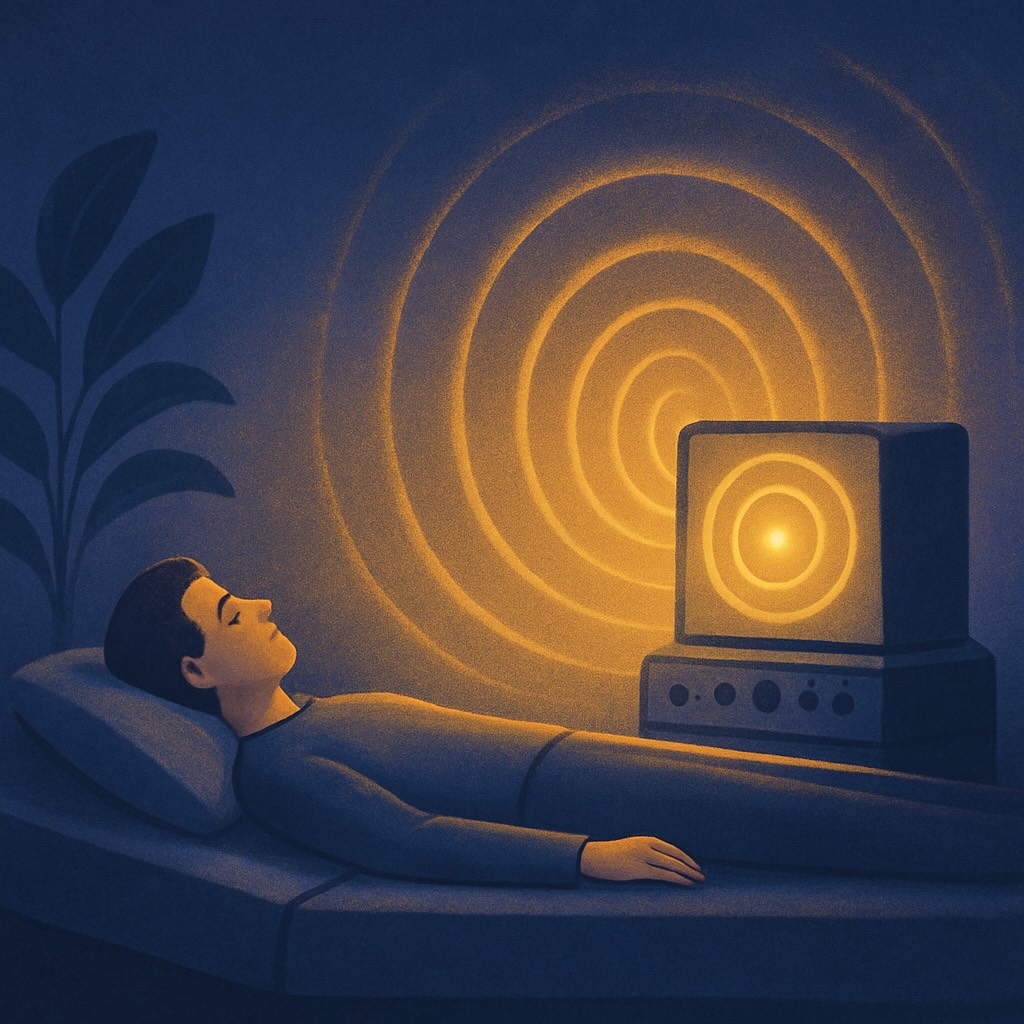Healing Waves: How Vibration Is Entering the Medicine of the Future
In hospitals across Northern Europe and in a few U.S. university centers, something unusual is happening: patients are not just listening to music — they’re feeling it through their bodies. The method is called vibroacoustic therapy, a treatment that transmits low-frequency sound waves through special surfaces or beds. What once sounded like a New Age experiment is now being tested in clinical trials for chronic pain, insomnia, anxiety, and even neurological rehabilitation.
The idea that sound can heal is ancient, but technology has given it a new vocabulary. Frequencies between 30 and 120 hertz are converted into physical vibrations that travel through tissues, stimulating cutaneous receptors and modulating the autonomic nervous system. In simpler terms: the body listens before the mind does.
Over the past three years, pilot studies and systematic reviews have begun documenting tangible effects. Some patients report decreased pain perception; others sleep better or feel “lighter” after just a few minutes of exposure. A 2024 study from the University of Toronto found improvements in short-term memory and attention in elderly subjects who received transcranial vibroacoustic stimulation. Additional research from Finland and South Korea showed reduced heart rate and increased heart rate variability — biological signs of calm and parasympathetic balance.
But science, for once, is not rushing ahead. Experts caution that the evidence is still preliminary: there are no shared protocols, frequencies and session lengths vary, and outcome measurements differ widely. Some researchers suggest that part of the benefit may come from a strong positive placebo effect, amplified by the multisensory experience itself. Yet even this is now seen not as a flaw but as a virtue — if a safe, noninvasive practice reduces anxiety or pain without drugs, that’s already meaningful.
Culturally, the trend is just as fascinating. Vibroacoustic therapy started within music therapy programs but is rapidly spreading to wellness and meditation contexts. Increasing numbers of yoga studios and spas now offer “sound baths” using instruments tuned to therapeutic frequencies. Participants often describe deep emotional release, instant relaxation, or simply an elusive sense of inner order.
Neuroscientists are watching closely. Vibrations appear to facilitate neural synchronization in brain networks linked to attention and body awareness. The mechanism is still debated, but one principle stands: the brain mirrors what the body feels.
And perhaps that’s why, in a world overloaded with noise, the most silent — and literally lowest — answer comes from sound itself. The surprising conclusion: vibrations don’t promise miracles, but they can return to you something forgotten — the ability to truly feel yourself from within.
The idea that sound can heal is ancient, but technology has given it a new vocabulary. Frequencies between 30 and 120 hertz are converted into physical vibrations that travel through tissues, stimulating cutaneous receptors and modulating the autonomic nervous system. In simpler terms: the body listens before the mind does.
Over the past three years, pilot studies and systematic reviews have begun documenting tangible effects. Some patients report decreased pain perception; others sleep better or feel “lighter” after just a few minutes of exposure. A 2024 study from the University of Toronto found improvements in short-term memory and attention in elderly subjects who received transcranial vibroacoustic stimulation. Additional research from Finland and South Korea showed reduced heart rate and increased heart rate variability — biological signs of calm and parasympathetic balance.
But science, for once, is not rushing ahead. Experts caution that the evidence is still preliminary: there are no shared protocols, frequencies and session lengths vary, and outcome measurements differ widely. Some researchers suggest that part of the benefit may come from a strong positive placebo effect, amplified by the multisensory experience itself. Yet even this is now seen not as a flaw but as a virtue — if a safe, noninvasive practice reduces anxiety or pain without drugs, that’s already meaningful.
Culturally, the trend is just as fascinating. Vibroacoustic therapy started within music therapy programs but is rapidly spreading to wellness and meditation contexts. Increasing numbers of yoga studios and spas now offer “sound baths” using instruments tuned to therapeutic frequencies. Participants often describe deep emotional release, instant relaxation, or simply an elusive sense of inner order.
Neuroscientists are watching closely. Vibrations appear to facilitate neural synchronization in brain networks linked to attention and body awareness. The mechanism is still debated, but one principle stands: the brain mirrors what the body feels.
And perhaps that’s why, in a world overloaded with noise, the most silent — and literally lowest — answer comes from sound itself. The surprising conclusion: vibrations don’t promise miracles, but they can return to you something forgotten — the ability to truly feel yourself from within.



